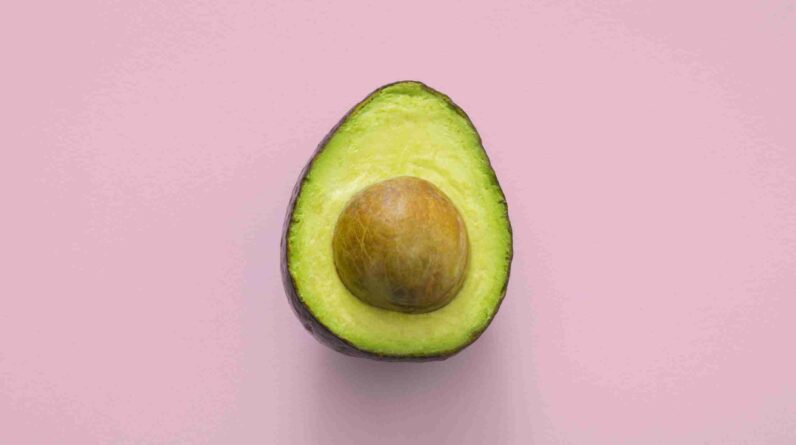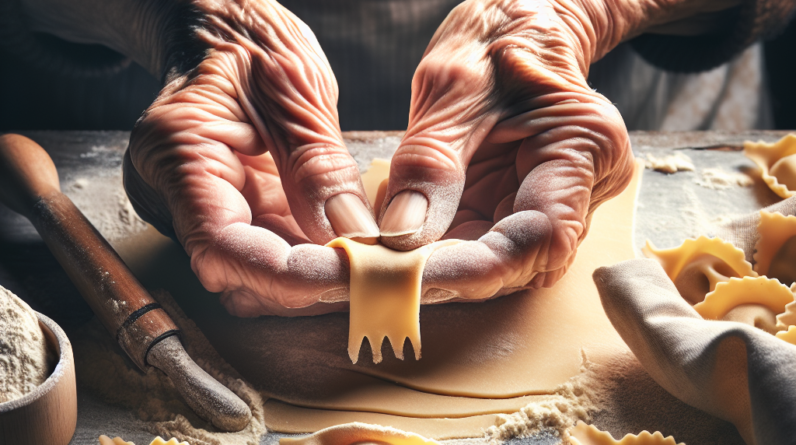When it comes to Italian cuisine, one cannot overlook the significance of bread. From its humble beginnings to its current role in dishes like bruschetta, bread holds a special place in the hearts and palates of Italians. It acts as the foundation of many meals, providing a comforting and satisfying base for a wide array of flavors. Whether it’s used to scoop up saucy pasta or as a vessel for vibrant toppings, bread in Italian cuisine is more than just a side dish – it’s a culinary cornerstone that brings people together.
The Role of Bread in Italian Cuisine
When we think about Italian cuisine, one of the first things that come to mind is bread. Bread holds a special place in Italian culture and plays a crucial role in many traditional dishes. It is not simply an accompaniment but an integral part of the meal, symbolizing the heart of Italian tradition and culture. From the various types of bread available to its versatile role in both main dishes and appetizers, bread truly is a staple in Italian cuisine.
A Staple in Italian Cuisine
Bread is more than just a food item in Italy; it is an essential part of daily life. From breakfast to dinner, bread is present in almost every meal. Whether it’s a simple slice of pane di casa, a classic Tuscan loaf, or a crispy baguette, bread is the foundation of many Italian dishes. It serves as a vessel for sauces, a base for toppings, and a way to scoop up every last bit of flavorful goodness from the plate. The importance of bread in Italian cuisine cannot be overstated.
Symbol of Italian Tradition and Culture
In Italy, bread is not just food; it is a symbol of tradition and culture. Breaking bread together is a sacred ritual, a gesture of unity and friendship. Throughout history, bread has been seen as a symbol of abundance, sustenance, and communion. It is often placed at the center of the table, representing the heart and soul of the Italian meal. The art of breadmaking is passed down through generations, and each region has its own unique bread specialties, showcasing the rich diversity of Italian culture.
Versatile Role in Main Dishes and Appetizers
Italian bread shines not only as a standalone food item but also as a key ingredient in many main dishes and appetizers. Its versatility allows it to adapt to various recipes, adding texture, flavor, and depth to the overall taste experience. Let’s explore some of the different types of Italian bread and how they are used in various dishes.
Different Types of Italian Bread
Pane di Casa
Pane di Casa, also known as Italian country bread, is a simple yet delicious loaf that is widely enjoyed throughout Italy. Its rustic crust and chewy interior make it the perfect choice for sandwiches, bruschetta, and panzanella. It is also commonly used to soak up the rich sauces of traditional Italian stews and soups.
Ciabatta
Originating from the region of Liguria, ciabatta is a soft and airy bread with a light flavor. Its porous texture and shape make it ideal for sandwiches and panini. Ciabatta is often filled with a variety of ingredients such as cured meats, cheeses, and vegetables, creating a delightful combination of flavors and textures.
Focaccia
Focaccia is a beloved Italian bread known for its pillowy texture and slightly salty taste. It is typically topped with olive oil, herbs, and sometimes even cheese or vegetables. Focaccia can be enjoyed on its own as a snack or served as an accompaniment to a meal. It is also a popular choice for creating panini and sandwiches.
Grissini
Grissini, or Italian breadsticks, are long and thin breadsticks that are typically crispy and flavored with salt or herbs. They are often served as a pre-dinner snack or appetizer alongside cured meats and cheeses. Grissini can also be used as a garnish in soups or as a versatile accompaniment to various dips and spreads.
Taralli
Taralli are small, round crackers that resemble bagels. They are typically made with flour, water, and olive oil and can be flavored with various herbs and spices such as fennel, black pepper, or chili flakes. Taralli are a popular snack in Italy and are often enjoyed with a glass of wine or as an addition to antipasti platters.
The Significance of Bread in Bruschetta
Bruschetta is a classic Italian dish that showcases the importance of bread in Italian cuisine. It is a simple yet flavorful appetizer that consists of grilled bread rubbed with garlic and topped with various ingredients. The combination of crunchy bread, fragrant garlic, and vibrant toppings makes bruschetta a delightful starter or light meal option.
The Foundation of Bruschetta
Bread serves as the foundation of bruschetta, providing a sturdy base to hold the toppings. Traditionally, a rustic loaf such as pane di casa or ciabatta is used, as their denser texture holds up well to the toppings without becoming soggy. The bread is sliced and either grilled or toasted until it is crisp on the outside but still soft on the inside.
Enhancing Flavors and Textures
The texture of the bread plays a crucial role in the overall experience of bruschetta. The contrast between the crispy exterior and the soft interior creates a satisfying crunch with every bite. Additionally, the toasting process enhances the flavor of the bread, adding a subtle smokiness that complements the toppings beautifully.
Versatility in Toppings
One of the most enticing aspects of bruschetta is its versatility when it comes to toppings. The possibilities are endless, allowing you to tailor the dish to your preferences and take advantage of seasonal ingredients. Classic bruschetta often features ripe tomatoes, fresh basil, and a drizzle of olive oil. Other popular toppings include diced mozzarella, prosciutto, roasted vegetables, and creamy spreads like ricotta or goat cheese.
Making Bruschetta
Creating bruschetta is a relatively simple process that starts with the preparation of the bread. Followed by the step of rubbing the bread with garlic, and then adding various toppings to complete this delectable dish.
Preparation and Toasting the Bread
To make bruschetta, the chosen bread is sliced into thick pieces, typically around ¾ inch thick. The slices are then lightly brushed with olive oil on both sides. The bread can be toasted on a grill, in a toaster oven, or even under the broiler until it becomes golden brown and crisp. Make sure to keep a close eye on the bread during the toasting process to prevent it from burning.
Rubbing with Garlic
After the bread is toasted, it is traditional to rub one side of each slice with a clove of raw garlic. This step infuses the bread with a subtle garlic flavor and adds an aromatic touch. By rubbing the bread with garlic instead of using minced garlic, the flavor is more delicate and harmonious with the other ingredients.
Adding Tomatoes and Other Toppings
Once the bread is prepared and garlic-rubbed, it is time to add the toppings. As mentioned earlier, the classic combination of diced tomatoes, fresh basil leaves, and a drizzle of olive oil is a crowd-pleaser. However, feel free to get creative and experiment with different toppings to suit your taste preferences. From creamy avocado and shrimp to tangy marinated artichokes, the choice is yours.
Other Italian Dishes that Utilize Bread
Bread plays a significant role in many other Italian dishes, showcasing its versatility and importance in Italian cuisine. Whether it’s the iconic panini, the hearty crostone, or the refreshing panzanella, bread takes center stage and elevates these dishes to new heights.
Panini
Panini are grilled sandwiches made with Italian bread, typically ciabatta or focaccia. A variety of fillings can be used, such as cured meats, cheeses, vegetables, and spreads. The bread is grilled until it is crispy and the fillings are heated and melted, creating a satisfying combination of flavors and textures.
Crostone
Crostone is an open-faced sandwich that features a thick slice of bread topped with a variety of ingredients. It is often served as an appetizer or snack, with toppings ranging from tomatoes and mozzarella to mushrooms and truffle oil. The bread provides a sturdy base for the toppings, allowing them to shine in every bite.
Panzanella
Panzanella is a refreshing salad that showcases the beauty of leftover or stale bread. Crusty bread cubes are soaked in olive oil and vinegar, then tossed with ripe tomatoes, cucumbers, onions, and fresh basil. The bread absorbs the vibrant flavors of the dressing and the juices of the tomatoes, creating a harmonious blend of taste and texture.
Ribollita
Ribollita is a hearty Tuscan soup that utilizes bread as a thickening agent. The traditional recipe includes a mixture of vegetables, beans, and leftover bread, which is added towards the end of cooking. As the soup simmers, the bread breaks down, thickening the broth and adding a velvety texture. Ribollita is typically served with a drizzle of olive oil and a sprinkle of grated Parmesan cheese.
Bread in Italian Bread Soup
Bread takes on an even more prominent role in Italian bread soups, adding substance, texture, and flavor to these comforting dishes. Zuppa di Pane, Pappa al Pomodoro, and Acquacotta are just a few examples of the delicious bread soups that can be found throughout Italy.
Zuppa di Pane
Zuppa di Pane, also known as bread soup, is a rustic and hearty dish that originated in central Italy. It is made by simmering a mixture of vegetables, such as onions, celery, and carrots, in a flavorful broth. Pieces of stale bread, often torn into chunks, are added to the soup and left to absorb the liquid, creating a thick and satisfying texture. Zuppa di Pane is typically garnished with grated Parmesan cheese and a drizzle of olive oil before serving.
Pappa al Pomodoro
Pappa al Pomodoro is a classic Tuscan dish that celebrates the simplicity of Italian ingredients. It is made by combining ripe tomatoes, garlic, basil, and vegetable broth with cubes of stale bread. The bread soaks up the flavors of the tomatoes, resulting in a thick and luscious soup. Pappa al Pomodoro is typically garnished with additional fresh basil and a drizzle of high-quality olive oil.
Acquacotta
Acquacotta, meaning “cooked water,” is a traditional soup from the region of Maremma, Italy. It is made by simmering a mixture of vegetables, such as onions, tomatoes, and greens, in water or broth. Stale bread is added to the soup to thicken it and provide a satisfying texture. Acquacotta is typically finished with a poached egg and grated Pecorino cheese, creating a rich and flavorful dish.
Bread in Italian Desserts
Bread even makes its way into Italian desserts, adding texture and depth to these sweet treats. Let’s explore a few examples of how bread is used to create delicious Italian desserts.
Tiramisu
Tiramisu is a beloved Italian dessert that features layers of ladyfingers soaked in coffee and layered with a creamy mixture of mascarpone cheese, eggs, and sugar. The ladyfingers, which are a type of sweet sponge cake, provide a delicate and spongy texture to the dessert. They also absorb the coffee and liqueur, adding a rich and flavorful element.
Panzanella Pudding
Panzanella Pudding is a variation of the classic Tuscan bread salad, panzanella. In this dessert, stale bread is combined with sugar, eggs, milk, and a variety of fruits such as berries or peaches. The mixture is then baked until the bread softens and the pudding sets. Panzanella Pudding is a comforting and delicious dessert that combines the flavors of summer with the heartiness of bread.
Crostata di Pane
Crostata di Pane, or bread tart, is a traditional dessert that originated in the region of Umbria, Italy. It consists of a sweet bread dough filled with a mixture of dried fruits, nuts, honey, and spices. The bread dough is lightly sweetened, providing a sturdy and flavorful base for the filling. Crostata di Pane is typically enjoyed during festive occasions and is a celebration of the rich flavors of Italian baking.
Bread as a Table Essential
In addition to its role in various dishes, bread also serves as an essential component of the Italian table setting. It is often served alongside meals, offering a versatile accompaniment that can be enjoyed in various ways.
Accompanying Meals
Bread is commonly found on the tables of Italian households and restaurants, ready to be torn into and savored alongside the main course. It offers a textural contrast to the other elements of the meal and can be used to scoop up sauces or mop up remaining flavors on the plate. The presence of bread on the table completes the dining experience, making the meal feel whole and satisfying.
Dipping in Olive Oil
In Italy, another popular way to enjoy bread is by dipping it in high-quality extra virgin olive oil. The bread acts as a vehicle for the rich and fruity flavors of the oil, allowing them to shine with each bite. It is a simple yet delightful way to savor the taste of both the bread and the oil, highlighting the natural elements of each ingredient.
Bread and Wine Pairing
Bread also plays a role in the art of wine pairing. Certain types of bread can complement specific wines, enhancing the flavors of both. For example, a crusty, rustic bread like pane di casa pairs well with a full-bodied red wine, while a lighter, airy bread like ciabatta pairs nicely with a crisp white wine. By considering the flavors and textures of both the bread and the wine, one can create a harmonious pairing that elevates the dining experience.
Common Bread Traditions in Italy
Bread holds significant cultural and symbolic value in Italy, leading to various traditions and customs associated with this humble food item.
Bread as a Symbolic Offering
In many Italian households, it is customary to greet guests with a warm loaf of freshly baked bread. This act symbolizes hospitality, welcoming guests into the home with open arms and providing nourishment and comfort. The offering of bread reflects the importance of sharing and community in Italian culture.
Bread in Religious Celebrations
Bread plays a pivotal role in religious celebrations throughout Italy. In Catholicism, bread is deeply rooted in the Eucharist, representing the body of Christ. It is consecrated during Mass and distributed to the faithful as a sacrament. The act of breaking bread together during religious gatherings emphasizes the unity and spiritual connection among believers.
Bread in Local Festivals
Many regions in Italy celebrate bread and its cultural significance through vibrant festivals and events. These celebrations often include bread-making demonstrations, competitions, and the sharing of traditional recipes. Local bakers and artisans proudly showcase their bread specialties, honoring the heritage and craftsmanship that goes into every loaf.
The Art of Breadmaking in Italy
Breadmaking in Italy is an art form that has been perfected over centuries. Each region has its own traditional techniques, recipes, and specialties, resulting in a vast array of bread varieties.
Traditional Breadmaking Techniques
While the basic process of breadmaking remains the same, each region in Italy has its own unique approach and techniques. From sourdough starters to extended fermentation periods, bread is made with care and precision. The use of high-quality ingredients, such as locally milled flour and extra virgin olive oil, contributes to the exceptional flavor and texture of Italian bread.
Regional Variations and Specialties
Italy’s diverse culinary landscape is reflected in its bread offerings. From the iconic crusty loaves of Tuscany to the soft and fragrant breads of Sicily, each region has its own specialties. For example, Puglia is famous for its Altamura bread, a hearty and rustic loaf with a protected designation of origin. Similarly, Lombardy is known for its traditional cornbread, called polenta, which is made from finely ground maize flour.
Preserving Breadmaking Techniques
Preserving traditional breadmaking techniques is of utmost importance in Italy. Many artisan bakeries and organizations are dedicated to safeguarding these age-old practices, passing them down to future generations. By keeping these techniques alive, the art of breadmaking in Italy continues to flourish, ensuring that every loaf is made with the same love and dedication as those that came before.
In conclusion, bread is not just a food item in Italian cuisine; it is a symbol of tradition, culture, and unity. From its role as a staple in Italian cuisine to its versatility in various dishes and desserts, bread holds immense significance. Whether it’s the foundation of bruschetta, a key ingredient in hearty soups, or a delightful accompaniment at the table, bread is an essential element of the Italian dining experience. So next time you savor a slice of warm, crusty Italian bread, remember the centuries of craftsmanship and tradition that have gone into creating this culinary masterpiece. Buon appetito!










